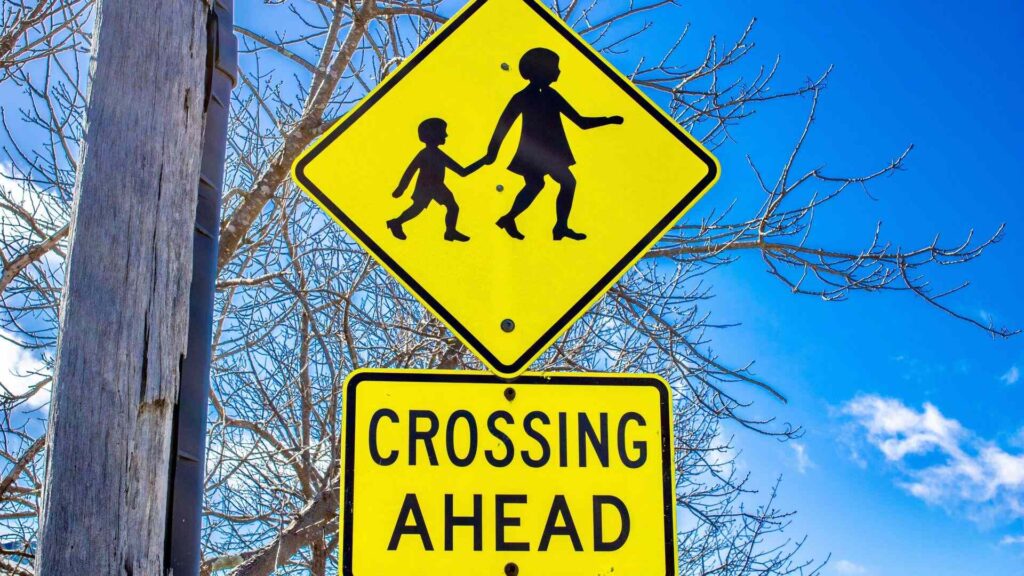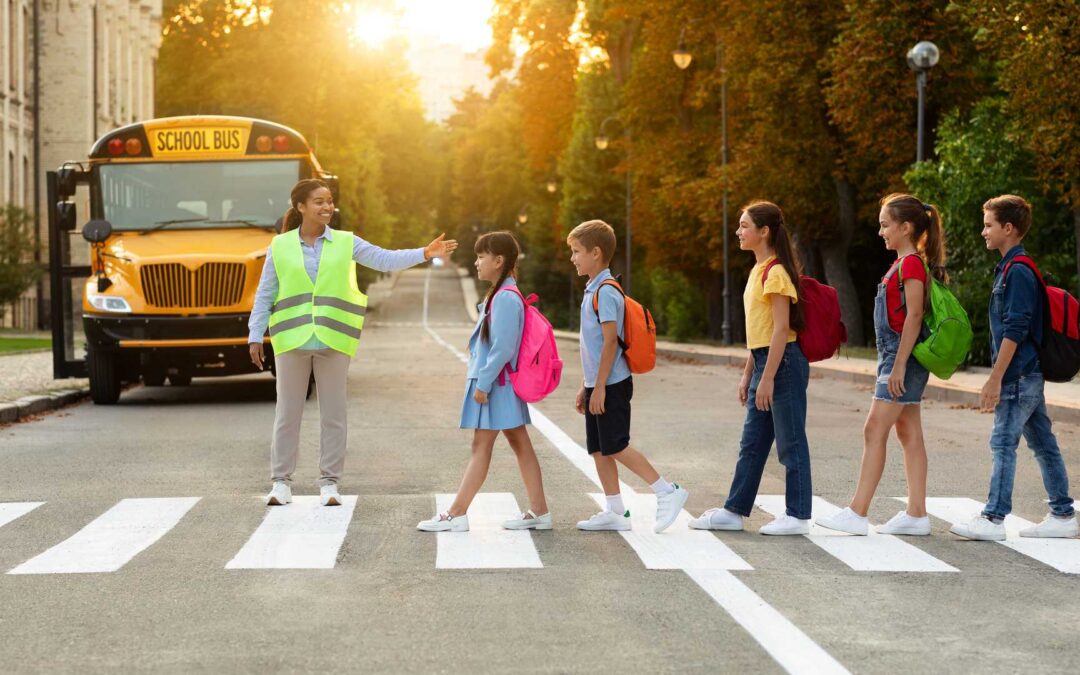Personal injury claims for injuries sustained in school zones require a nuanced understanding of the law, diligent evidence gathering, and often, legal expertise. School zones are designated areas intended to protect children by regulating traffic and ensuring safety. However, accidents can still occur due in a school zone to various factors such as speeding, distracted driving, or insufficient signage. This comprehensive guide will delve into the steps involved in handling personal injury claims for such injuries in Georgia, covering legal considerations, practical steps, and tips for navigating the claims process.
Understanding School Zone Regulations in Georgia
School zones are specific areas near schools where traffic laws are strictly enforced to ensure the safety of children. Understanding these regulations is the first step in handling personal injury claims.
Speed Limits and Traffic Laws
In Georgia, the speed limit in school zones typically ranges between 15 to 25 mph during designated times, usually when children are arriving at or leaving school. These limits are enforced with the help of traffic signs, flashing lights, and sometimes speed cameras. Violating these speed limits can result in hefty fines and penalties.
- Reduced Speed Limits: The lower speed limits are designed to give drivers more time to react to potential hazards, such as children crossing the street.
- Increased Penalties: Traffic violations in school zones can result in increased fines and points on a driver’s license.
- Pedestrian Crosswalks: School zones often have marked pedestrian crosswalks, and drivers are required to yield to pedestrians.
Common Causes of Accidents in School Zones
Accidents in school zones can occur due to various reasons. Identifying these causes is crucial for building a strong personal injury claim.
Speeding
Despite the reduced speed limits, speeding remains a common issue in school zones. Drivers may be in a hurry or simply inattentive, leading to dangerous situations.
Distracted Driving
Distracted driving, such as using a mobile phone, eating, or adjusting the radio, can divert a driver’s attention away from the road. In a school zone, where children may suddenly cross the street, such distractions can be fatal.
Insufficient Signage
Sometimes, school zones may lack adequate signage to alert drivers of the need to slow down. Poorly placed or missing signs can contribute to accidents.
Reckless Driving
Reckless driving, including aggressive maneuvers, tailgating, and failure to yield to pedestrians, can increase the risk of accidents in school zones.
Poor Road Conditions
In some cases, poor road conditions, such as potholes or inadequate lighting, can contribute to accidents in school zones.

Steps to Take Immediately After an Accident
If an accident occurs in a school zone, certain steps should be taken immediately to ensure safety and preserve evidence for a potential personal injury claim.
Ensure Safety
The first priority after an accident is to ensure the safety of all involved parties. Move to a safe location if possible and check for injuries.
- Call 911: Contact emergency services immediately if anyone is injured. Prompt medical attention is crucial.
- Alert Authorities: Inform the police about the accident. A police report will be valuable for your personal injury claim.
Gather Evidence
Collecting evidence at the scene is essential for building a strong case. This includes:
- Photographs: Take pictures of the accident scene, including vehicle positions, damage, road conditions, and any relevant signage.
- Witness Statements: Collect contact information and statements from witnesses who saw the accident.
- Driver Information: Exchange information with the other driver(s), including names, contact details, insurance information, and license plate numbers.
Seek Medical Attention
Even if injuries seem minor, it’s important to seek medical attention. Some injuries may not be immediately apparent and can worsen over time.
- Document Injuries: Keep records of all medical treatments and diagnoses. Medical documentation will be crucial for your claim.
Legal Considerations in Personal Injury Claims
Understanding the legal aspects of personal injury claims in Georgia is essential for navigating the process effectively.
Liability in School Zone Accidents
Determining liability in school zone accidents can be complex. It may involve multiple parties, including the driver, the school, and even local government entities.
- Driver Liability: The driver who caused the accident is typically held liable for any injuries or damages. Violations such as speeding or distracted driving can strengthen your case.
- School Liability: In some cases, the school may be held liable if the accident was due to inadequate supervision or poor maintenance of the school zone.
- Government Liability: If the accident was caused by poor road conditions or insufficient signage, local government entities responsible for road maintenance may be held liable.
Comparative Negligence
Georgia follows a comparative negligence rule, which means that the compensation you receive can be reduced by your percentage of fault in the accident. If you are found to be partially responsible, your damages will be reduced accordingly.
Statute of Limitations
In Georgia, the statute of limitations for personal injury claims is typically two years from the date of the accident. It’s crucial to file your claim within this period to avoid losing your right to compensation.
Building a Strong Personal Injury Claim
Building a strong personal injury claim involves several key steps, from gathering evidence to negotiating with insurance companies.
Documentation and Evidence
Thorough documentation and evidence are the backbone of a successful personal injury claim.
- Accident Reports: Obtain a copy of the police report and any other official documentation of the accident.
- Medical Records: Keep detailed records of all medical treatments, diagnoses, and expenses related to your injuries.
- Photographic Evidence: Compile all photographs taken at the scene and any subsequent damage or injuries.
- Witness Statements: Collect written statements from witnesses, if possible.
Legal Representation
Hiring an experienced personal injury attorney can significantly improve your chances of a successful claim. An attorney can help navigate the legal complexities, negotiate with insurance companies, and represent you in court if necessary.
- Choosing the Right Attorney: Look for an attorney with experience in personal injury cases and a good track record of success.
- Legal Fees: Many personal injury attorneys work on a contingency fee basis, meaning they only get paid if you win your case.
Negotiating with Insurance Companies
Insurance companies often try to minimize payouts, so it’s important to be prepared for negotiations.
- Initial Offers: Be cautious of initial settlement offers from insurance companies, as they are often lower than what you deserve.
- Counter Offers: Work with your attorney to make counter offers based on the full extent of your damages and losses.
- Settlement Agreements: Carefully review any settlement agreements before signing. Ensure that all terms are clear and that the settlement adequately covers your damages.
Pursuing Compensation
Understanding the types of compensation available and how to pursue them is crucial for a successful personal injury claim.
Types of Compensation
Personal injury claims can include several types of compensation:
- Medical Expenses: This includes current and future medical costs related to your injuries.
- Lost Wages: Compensation for income lost due to your inability to work.
- Pain and Suffering: Damages for physical pain and emotional distress caused by the accident.
- Property Damage: Compensation for any damage to your vehicle or other property.
- Punitive Damages: In cases of gross negligence or intentional misconduct, you may be awarded punitive damages to punish the responsible party.
Calculating Damages
Accurately calculating damages is crucial for ensuring you receive fair compensation.
- Economic Damages: These are tangible costs such as medical bills and lost wages.
- Non-Economic Damages: These are intangible costs such as pain and suffering. Calculating these damages often involves multiplying the economic damages by a certain factor, depending on the severity of your injuries.
Case Studies and Real-Life Examples
To further understand the process of handling personal injury claims for injuries sustained in school zones, let’s look at some real-life examples and case studies.
Case Study 1: Speeding in a School Zone
In this case, a driver was speeding through a school zone and struck a child who was crossing the street. The driver was found to be at fault due to speeding and failure to yield to a pedestrian. The child’s family filed a personal injury claim, and with the help of an attorney at our firm, were able to secure compensation for medical expenses, pain and suffering, and future care costs.
Case Study 2: Distracted Driving
A parent was injured in a school zone when a distracted driver rear-ended their vehicle while they were waiting for their child. The distracted driver was texting and did not notice the stopped car. The injured parent filed a personal injury claim with our law firm and received compensation for medical bills, lost wages, and vehicle repair costs.
Tips for Preventing Accidents in School Zones
Preventing accidents in school zones requires a collaborative effort from drivers, parents, schools, and local authorities.
For Drivers
- Follow Speed Limits: Always adhere to the posted speed limits in school zones.
- Stay Alert: Avoid distractions and be extra vigilant during school hours.
- Yield to Pedestrians: Always yield to pedestrians, especially children, in school zones.
For Parents and Schools
- Teach Safety: Educate children about road safety and the importance of using crosswalks.
- Supervise Young Children: Ensure that young children are supervised when crossing streets or walking near traffic.
- Improve Signage: Schools should work with local authorities to ensure adequate signage and markings in school zones.
Conclusion
Handling personal injury claims for injuries sustained in school zones in Georgia involves a thorough understanding of the law, diligent evidence gathering, and often, legal expertise. By following the steps outlined in this guide, victims can navigate the claims process more effectively and secure the compensation they deserve. Preventing accidents in school zones requires a collective effort from all stakeholders, including drivers, parents, schools, and local authorities. By prioritizing safety and awareness, we can create a safer environment for our children and reduce the incidence of school zone accidents.
Additional Resources
For more information on handling personal injury claims and school zone safety in Georgia, consider visiting the following resources:
- Georgia Department of Transportation (GDOT)
- Governor’s Office of Highway Safety
- Georgia Legal Aid
- National Safety Council (NSC)
FAQs on Personal Injury Claims in School Zones
What should I do immediately after an accident in a school zone?
Ensure safety, call 911, gather evidence, and seek medical attention.
How can I prove the other driver was at fault?
Collect evidence such as photographs, witness statements, and police reports.
What types of compensation can I pursue?
You can pursue compensation for medical expenses, lost wages, pain and suffering, property damage, and punitive damages.
How long do I have to file a personal injury claim in Georgia?
You typically have two years from the date of the accident to file a claim.
Do I need a lawyer for my personal injury claim?
While not mandatory, hiring an experienced personal injury attorney like our team at Rebecca Kay Sapp Law Firm can significantly improve your chances of a successful claim.

